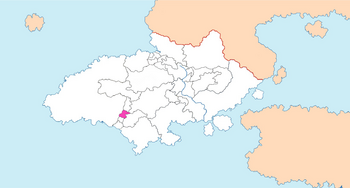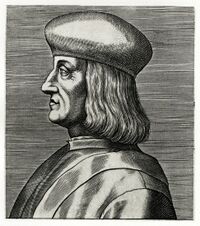Free City of Rosenstadt: Difference between revisions
No edit summary |
No edit summary |
||
| Line 141: | Line 141: | ||
As the City State expanded, the northern territories would provide Rosenstadt would rare Iron deposits, subsequently helping create Rosenstadts second largest city, Schwarzfel, which began as a mining town, but would eventually come to posses one of the best forges in Dolchland. By 951, and the death of Otto II, the state was on its way to becoming a real power within Dolchland, and Rosenstadt City would become renown for its wealth and rapid growth... | As the City State expanded, the northern territories would provide Rosenstadt would rare Iron deposits, subsequently helping create Rosenstadts second largest city, Schwarzfel, which began as a mining town, but would eventually come to posses one of the best forges in Dolchland. By 951, and the death of Otto II, the state was on its way to becoming a real power within Dolchland, and Rosenstadt City would become renown for its wealth and rapid growth... | ||
==Economy== | |||
===Industry=== | |||
===Infrastructure=== | |||
===Transport=== | |||
Revision as of 19:48, 14 December 2021
Free City of Rosenstadt Freistadt Rosenstadt (Alemannisch) | |
|---|---|
 | |
| Capital | Rosenstadt |
| Official languages | Alemannisch |
| Demonym(s) | Rosenstadter |
| Government | Republic |
| Martin Roth | |
| Erika Braun | |
| Legislature | Stadtrat of Rosenstadt |
| Constituent State of Dolchland | |
• City founded | 891 |
• Granted Free charter | 1499 |
| Population | |
• Estimate | 195,842 |
Rosenstadt, or the Free City of Resenstadt is a small region within the greater nation of Dolchland. The city was founded by Otto Konig, who decided to settle the area due its bountiful rose fields, which is also what inspired the now flag and coat of arms of Resenstadt. Its physically land locked by the states of Sohenburg to the North and Almstadtloc to the south. Despite being one of the smallest states within Dolchland, it has very large population of 195,000 people, which is quite impressive. The city of Rosenstadt itself, is located on a minor river that runs through the Rosenstadt valley, known as the river Nukis, and the small city state is comprised of 13 minor "counties" whilst also being split into two regions, this being the Northern Highlands "Hochland" and the Southern Lowlands "Tiefland".
Flag and coat of arms
Rosenstadts Coat of Arms, comes from its plentiful rose valleys that for centuries were a common symbol of the city and its surrounding region. The Cities founder, Otto Konig, would incorporate the red of the roses, as well as the image of the rose it self and combine it with his houses color of gold yellow, to create the cities now signature coat of arms. The flag of Rosenstadt was designed after the city transitioned into a republic, it incorporates the red from the roses and the gold from the Konig family, and white to represent the cities peaceful and hopeful future. The Coat of Arms was added to the flag after the citizens complained that the current flag was not "patriotic" enough.
History
Founding
Rosenstadt (The city) was first founded by Otto Konig in 891. The city was established as a trading outpost along the River Nukis, with a nearby fort (Rosenstadt Castle) to protect it from neighboring states. Soon, the city would come be known as Rosenstadt, as nearby travelers and traders would often remark at the bountiful and beautiful rose fields of the valley. Initially, the city relied heavily on its fertile plains and its profitable agricultural sector to boost its growth. This would attract many people who would travel to the city in search for work. This is what sparked the first population boom of the region, and the city would soon grow into a large settlement. By the death of Otto Konig in 923, the city became a large economic powerhouse in the region, and through a series of purchases, would expand beyond a city and into a City State.
Expansion
Following the death of Otto, and the subsequent induction of Otto II, Rosenstadt would undergo a rapid expansion. Otto II would come to use the great wealth gathered by his father in order to purchase the entirety of the valley surrounding the city in 926, and would officially go from a lord, to a Prince and head of the newly established City State of Rosenstadt. The purchase provided more land for the growing state, and soon the people of Rosenstadt would begin to move outwards, as the city became inhabited by nobles, and as the less well off farmers and peasants would move to the small towns and villages that would spring up across the valley. This would also mark the destruction of the old Rosenstadt castle,which would be transformed into a palace for the growing nobility.
As the City State expanded, the northern territories would provide Rosenstadt would rare Iron deposits, subsequently helping create Rosenstadts second largest city, Schwarzfel, which began as a mining town, but would eventually come to posses one of the best forges in Dolchland. By 951, and the death of Otto II, the state was on its way to becoming a real power within Dolchland, and Rosenstadt City would become renown for its wealth and rapid growth...


